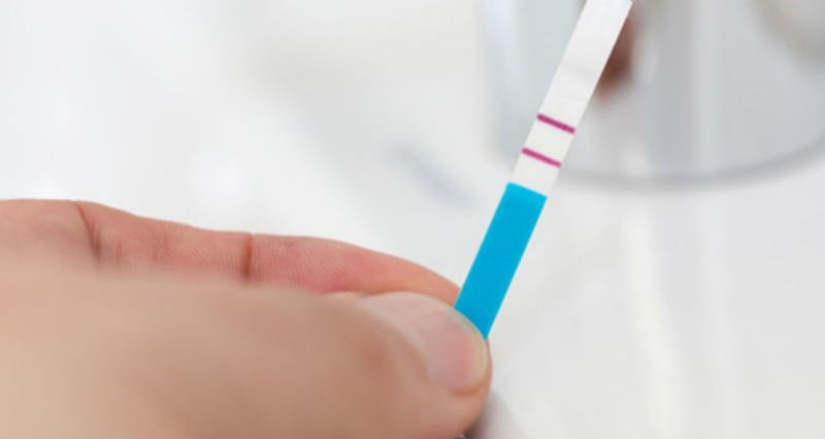9 very strange methods that our ancestors used to diagnose pregnancy
Categories: Health and Medicine | History
By Pictolic https://pictolic.com/article/9-very-strange-methods-that-our-ancestors-used-to-diagnose-pregnancy.htmlToday, it is not difficult to determine whether a woman is pregnant or not. It is enough to go to the pharmacy, buy a test strip and spend just a few minutes of time. These tools were widely available back in 1978, however, then it took 2 hours to get the result, and the reliability of the tests was only 20%.
But earlier with the definition of pregnancy, everything was much more difficult. What means our distant ancestors resorted to, we will tell in this review.


Wheat-barley dough
One of the first pregnancy tests, if not the very first, appeared in ancient Egypt. In 1350 BC, women were encouraged to urinate on wheat and barley grains for several days. If wheat sprouted, it meant that a woman should wait for a girl, and if barley sprouted, then a boy. If nothing sprouted, the woman was not pregnant.
What is most interesting, this test really worked: in 1963, scientists conducted an experiment and found that in 70% of cases, the urine of pregnant women can cause seeds to germinate, and the urine of non-pregnant women or men did not lead to such an effect.

Onion dough
While the ancient Egyptians checked whether a woman was pregnant with wheat and barley, the ancient Greeks used for this purpose... onions. Hippocrates, who is now considered the founder of medicine, proposed the following test: a woman who wanted to be tested for pregnancy had to insert an onion or other strongly smelling vegetable into her vagina at night. If her breath smelled like onions the next morning, then she wasn't pregnant. This was based on the idea that if a woman's uterus was open, the smell of onions would enter her mouth like a wind tunnel.

Beer Test
In the ancient Egyptian papyri read another strange way to determine pregnancy. It was necessary to pour a lot of beer and fermented wort on the floor in an enclosed room, and then sit a woman in this puddle. No wonder the smell in the room made her feel sick. And by the profusion of vomiting, it was determined whether she was pregnant.

Latch test
In a medical treatise of the late 15th century, it was said: "If you want to know if a woman is pregnant, you should ask her to urinate in a basin, and then put a latch or key in this basin for three or four hours. After that, you need to drain the urine, remove the latch and see if it left an imprint on the bottom of the pelvis. If so, the woman is pregnant."

The Prophets of Urine
In the 16th century, European "urine prophets" claimed that they could tell if a woman was pregnant by the color and other characteristics of her urine. Some also mixed urine with wine and observed the result (interestingly, alcohol can actually react to the proteins present in the urine of a pregnant woman). Also, these "prophets" determined by urine not only pregnancy, but also the diseases that their patient suffered from.

A woman's eyes
Doctor Jacques Gullemo, who lived in the XVI century, argued that you can judge a woman's pregnancy just by looking into her eyes. Gullemo, the author of a well-known treatise on ophthalmology, said that at the beginning of the second month, "the eyes of a pregnant woman are deep-set, the pupils are small, the eyelids are lowered, and there are swollen veins in the corners of the eyes." This is probably not true, but the doctor was right about one thing: during pregnancy, a woman can actually change her vision.

Chadwick's Sign
Even at the very beginning of pregnancy (at about six to eight weeks), the cervix, vagina and labia can acquire a dark bluish or purple-red hue due to increased blood flow to this area. This sign of pregnancy, along with other traditional signs, such as a craving for salt, was first noticed in 1836 by the French obstetrician James Chadwick (he received the same name-"Chadwick's sign"). But, given the primness of the doctors of that time, such signs of pregnancy were almost never checked.

Rabbit Test
In addition to observational tests, such as the Chadwick sign, there was a very unpleasant way of determining pregnancy until the twentieth century, which ended tragically for rabbits, mice and rats. In the 1920s, two German scientists, Selmar Aschheim and Bernhard Sondek, found in the urine of pregnant women a certain hormone that is associated with ovarian growth (today this hormone is known as chorionic gonadotropin). A pregnant woman's urine injection was given to immature rabbits, rats, or mice to encourage their ovaries to develop. On the fifth day after the injection, the animal was killed and opened to see the result.

Frog Test
Although this method worked on the same principle as the rabbit test, it was more humane, since the animal remained alive. In the late 1940s, scientists found that if you inject the urine of a pregnant woman to a live toad or frog, then within 24 hours she will begin to spawn.
Keywords: Health and medicine | History | Women | Test | Pregnancy | Methods
Post News ArticleRecent articles

Modern people are sure that all devilry begins exactly at midnight and this time is considered the most mystical and dangerous. But ...

Everything changes over time. And even those facts that you previously considered reinforced concrete may change after some time. ...
Related articles

Modern people are sure that all devilry begins exactly at midnight and this time is considered the most mystical and dangerous. But ...

Watch a selection of rare archival footage of the XX century stars posing with their moms. Looked like her Marilyn Monroe, ...

What do we women have to endure in the name of fashion? What sacrifices we are not forced to make to look beautiful, modern and ...

On your day off, you can take a break from everyday work, do what you love, or just have a good time with family and friends. Why ...